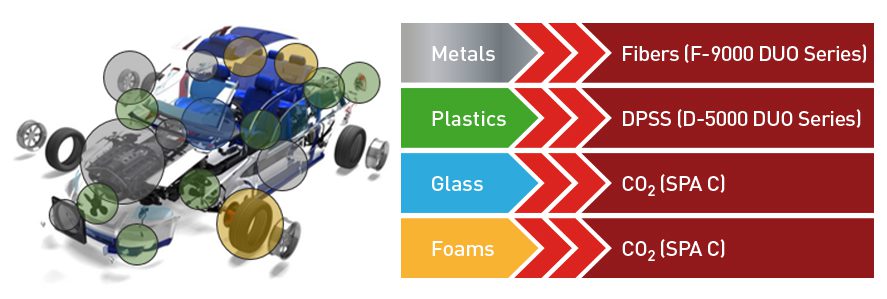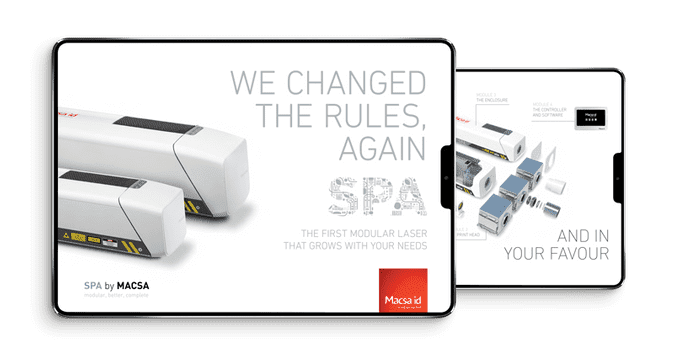If there is a permanently evolving industry, it is without a doubt the: The laser marking of the automotive industry.
Over the past few years, this sector has undergone an important process of technological transformation, one that will continue in the future given the important new challenges that this industry will face: electric vehicles, hydrogen vehicles, self-driving cars, digitalization, connectivity, etc.
All of these new challenges will drastically change the commuting habits of users, especially in urban areas, where carsharing will become the norm, as well as the payment for usage and services, in turn generating a much safer and more sustainable mobility.
These new trends in the automotive industry will mean a high turnover of users and vehicles, which in turn will require comprehensive traceability of the parts in these vehicles in order to maximize safety and availability.

A key element
In this new context, laser technology will become increasingly important. It is already used extensively in the automotive industry for identifying and tracing huge quantities of parts that are used in the manufacturing of a vehicle.
The new mobility models that are appearing will require coding and marking of additional parts that have, until now, remained outside of the scope of that control process. These parts will be made from different materials, from the most complex technical plastics to the most basic metals, to glass, foam and composite materials. It’s in
this constantly evolving and changing process, that the need for new solutions to mark and identify this plethora of new parts becomes starkly apparent.
The permanent nature of laser marking technology makes the identification of parts and their control easier, safer and more easily traceable. Laser Coding can take the form of alphanumeric data, 2D codes, data matrix or QR codes that enable more information to be marked on the components.In order to address the needs of this important market sector, Macsa ID has developed a range of lasers that comply with the needs of the industry and address a wide range of applications.



